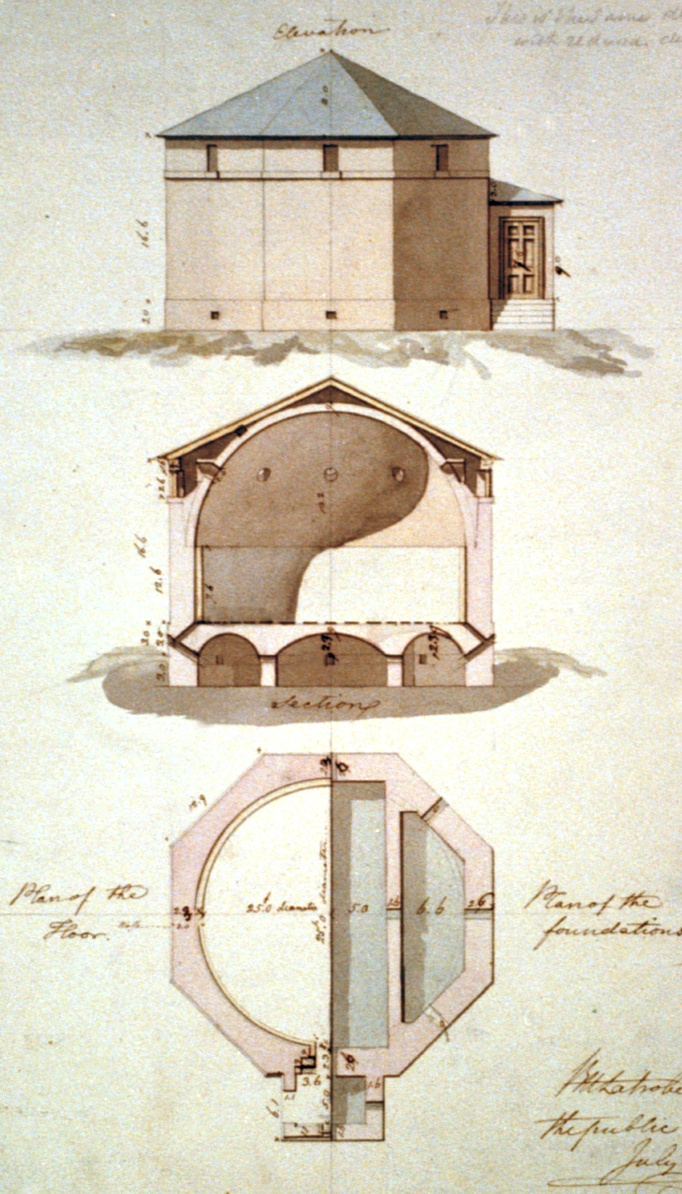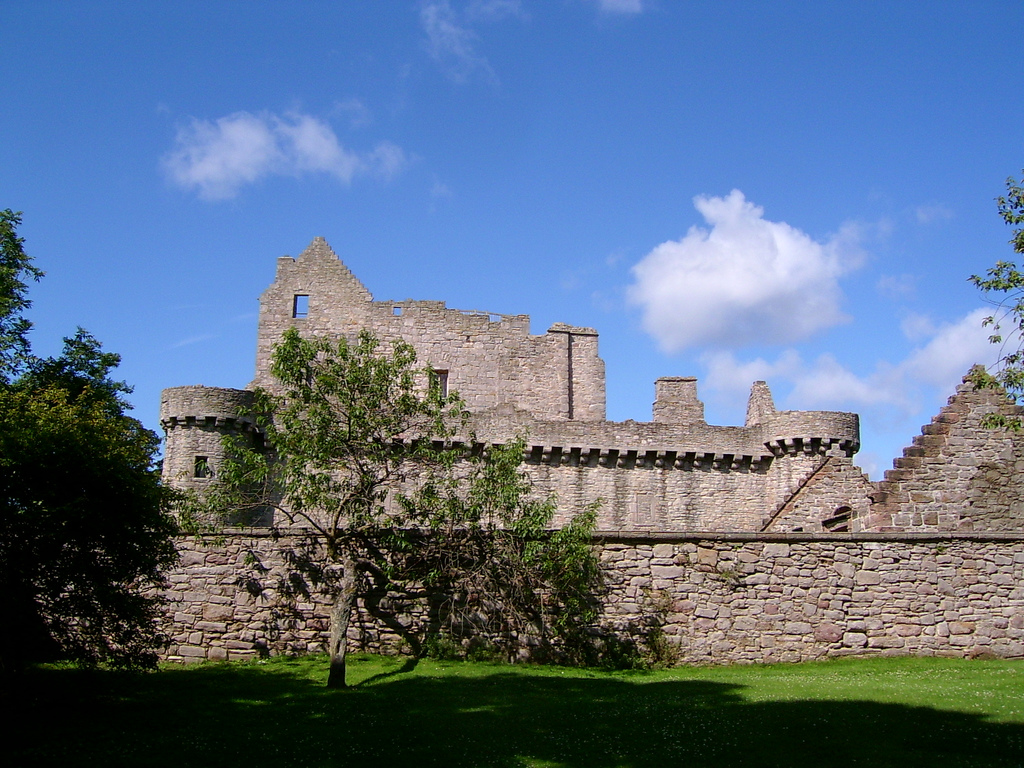|
Uttershill Castle
Uttershill Castle is a ruinous 16th-century tower house, about south of Penicuik, Midlothian, Scotland, south of the river River Esk, Lothian, North Esk, and west of the Black Burn.Coventry, Martin (1997) ''The Castles of Scotland''. Goblinshead. p.322 Alternative names are Utters Hill and Outtershill Castle. History The property belonged to the Prestons of Gorton and Craigmillar Castle, Craigmillar. In 1646 the Earl of Eglinton, Countess of Eglinton lived here. It was purchased by the Clerk baronets, Clerks of Penicuik in 1702. The castle was a ruin prior to the start of the 19th century, although it was used as a Gunpowder magazine, gunpowder store. The excavation was carried out in October 1994, in advance of a proposed restoration programme. Structure The castle stands on a level base, bounded to the north-east by a scarp slope, about high. The castle had two storeys or more, and may have had a courtyard. It had a Vault (architecture), vaulted basement, and a hall on th ... [...More Info...] [...Related Items...] OR: [Wikipedia] [Google] [Baidu] |
Gunpowder Magazine
A gunpowder magazine is a magazine (building) designed to store the explosive gunpowder in wooden barrels for safety. Gunpowder, until superseded, was a universal explosive used in the military and for civil engineering: both applications required storage magazines. Most magazines were purely functional and tended to be in remote and secure locations. They are the successor to the earlier powder towers and powder houses. In Australia Historic magazines were at the following locations, among others: *Jack's Magazine, Saltwater River, Victoria * Goat Island, Sydney *Spectacle Island (Port Jackson) *North Arm Powder Magazine *Dry Creek explosives depot In Canada There are magazines at: *Citadel Hill (Fort George) *Citadel of Quebec, Quebec City, Quebec *Parc de l'Esplanade, Quebec City, QuebecCole Island Esquimalt, British Columbia *Fort Lennox, Île-aux-Noix, Quebec *Fort William Historical Park, Thunder Bay, Ontario *Fort York, Toronto In Ireland Ballincollig, County Cork ... [...More Info...] [...Related Items...] OR: [Wikipedia] [Google] [Baidu] |
Castles In Great Britain And Ireland
Castles have played an important military, economic and social role in Great Britain and Ireland since their introduction following the Norman invasion of England in 1066. Although a small number of castles had been built in England in the 1050s, the Normans began to build motte and bailey and ringwork castles in large numbers to control their newly occupied territories in England and the Welsh Marches. During the 12th century the Normans began to build more castles in stone – with characteristic square keep – that played both military and political roles. Royal castles were used to control key towns and the economically important forests, while baronial castles were used by the Norman lords to control their widespread estates. David I invited Anglo-Norman lords into Scotland in the early 12th century to help him colonise and control areas of his kingdom such as Galloway; the new lords brought castle technologies with them and wooden castles began to be established over ... [...More Info...] [...Related Items...] OR: [Wikipedia] [Google] [Baidu] |
Harl
Harling is a rough-cast wall finish consisting of lime and aggregate, known for its rough texture. Many castles and other buildings in Scotland and Ulster have walls finished with harling. It is also used on contemporary buildings, where it protects against the wet Scottish and Ulster climates and eliminates the need for paint. Technique Harling as a process covers stonework using a plastering process involving a slurry of small pebbles or fine chips of stone. After a wall is complete and has been pointed and allowed to cure then a base of lime render is applied to the bare stone. While this render is still wet a specially shaped trowel is used to throw the pebbles onto the lime surface, which are then lightly pressed into it. Harl, being mostly lime render, cures chemically rather than simply drying. After this setting process, the harl is sometimes lime washed in a colour using traditional techniques. It is not recommendable to replace more than around 20% of the lime ... [...More Info...] [...Related Items...] OR: [Wikipedia] [Google] [Baidu] |
Hall
In architecture, a hall is a relatively large space enclosed by a roof and walls. In the Iron Age and early Middle Ages in northern Europe, a mead hall was where a lord and his retainers ate and also slept. Later in the Middle Ages, the great hall was the largest room in castles and large houses, and where the servants usually slept. As more complex house plans developed, the hall remained a large room for dancing and large feasts, often still with servants sleeping there. It was usually immediately inside the main door. In modern British houses, an entrance hall next to the front door remains an indispensable feature, even if it is essentially merely a corridor. Today, the (entrance) hall of a house is the space next to the front door or vestibule leading to the rooms directly and/or indirectly. Where the hall inside the front door of a house is elongated, it may be called a passage, corridor (from Spanish ''corredor'' used in El Escorial and 100 years later in Castle H ... [...More Info...] [...Related Items...] OR: [Wikipedia] [Google] [Baidu] |
Basement
A basement or cellar is one or more floors of a building that are completely or partly below the ground floor. It generally is used as a utility space for a building, where such items as the furnace, water heater, breaker panel or fuse box, car park, and air-conditioning system are located; so also are amenities such as the electrical system and cable television distribution point. In cities with high property prices, such as London, basements are often fitted out to a high standard and used as living space. In British English, the word ''basement'' is usually used for underground floors of, for example, department stores. The word is usually used with houses when the space below the ground floor is habitable, with windows and (usually) its own access. The word ''cellar'' applies to the whole underground level or to any large underground room. A ''subcellar'' is a cellar that lies further underneath. Purpose, geography, and history A basement can be used in almost exactly th ... [...More Info...] [...Related Items...] OR: [Wikipedia] [Google] [Baidu] |
Vault (architecture)
In architecture, a vault (French ''voûte'', from Italian ''volta'') is a self-supporting arched form, usually of stone or brick, serving to cover a space with a ceiling or roof. As in building an arch, a temporary support is needed while rings of voussoirs are constructed and the rings placed in position. Until the topmost voussoir, the keystone, is positioned, the vault is not self-supporting. Where timber is easily obtained, this temporary support is provided by centering consisting of a framed truss with a semicircular or segmental head, which supports the voussoirs until the ring of the whole arch is completed. Vault types Corbelled vaults, also called false vaults, with horizontally joined layers of stone have been documented since prehistoric times; in the 14th century BC from Mycenae. They were built regionally until modern times. The real vault construction with radially joined stones was already known to the Egyptians and Assyrians and was introduced into the buil ... [...More Info...] [...Related Items...] OR: [Wikipedia] [Google] [Baidu] |
Courtyard
A courtyard or court is a circumscribed area, often surrounded by a building or complex, that is open to the sky. Courtyards are common elements in both Western and Eastern building patterns and have been used by both ancient and contemporary architects as a typical and traditional building feature. Such spaces in inns and public buildings were often the primary meeting places for some purposes, leading to the other meanings of court. Both of the words ''court'' and ''yard'' derive from the same root, meaning an enclosed space. See yard and garden for the relation of this set of words. In universities courtyards are often known as quadrangles. Historic use Courtyards—private open spaces surrounded by walls or buildings—have been in use in residential architecture for almost as long as people have lived in constructed dwellings. The courtyard house makes its first appearance ca. 6400–6000 BC (calibrated), in the Neolithic Yarmukian site at Sha'ar HaGolan, in ... [...More Info...] [...Related Items...] OR: [Wikipedia] [Google] [Baidu] |
Clerk Baronets
There has been one creation of a baronetcy with the surname Clerk () (as distinct from Clark, Clarke and Clerke). It was created in the Baronetage of Nova Scotia by Letters Patent dated 24 March 1679, for John Clerk of Pennycuik (or Penicuik; see Penicuik House). His father, the merchant John Clerk, had returned from Paris in 1647 with a considerable fortune and purchased the lands of Penicuik in Midlothian. The 1st Baronet acquired the lands of Lasswade, Midlothian, in 1700. The second Baronet built Mavisbank House near Loanhead between 1723 and 1727. The 3rd Baronet, James, laid out plans for a new town in 1770, inspired by the local plans for a New Town in Edinburgh which were by then coming into reality. The rebuilding included a new church, St Mungos, in 1771, reputedly by Sir James himself. The family are said by Anderson (1867) to date from at least 1180 AD when one of them appeared as a witness to a donation to Holyrood Abbey by William The Lion. John Scougal is known ... [...More Info...] [...Related Items...] OR: [Wikipedia] [Google] [Baidu] |
Tower House
A tower house is a particular type of stone structure, built for defensive purposes as well as habitation. Tower houses began to appear in the Middle Ages, especially in mountainous or limited access areas, in order to command and defend strategic points with reduced forces. At the same time, they were also used as an aristocrat's residence, around which a castle town was often constructed. Europe After their initial appearance in Ireland, Scotland, the Stins, Frisian lands, Basque Country (greater region), Basque Country and England during the High Middle Ages, tower houses were also built in other parts of western Europe, especially in parts of France and Italy. In Italian medieval communes, urban ''palazzi'' with a very tall tower were increasingly built by the local highly competitive Patrician (post-Roman Europe), patrician families as power centres during times of internal strife. Most north Italian cities had a number of these by the end of the Middles Ages, but few no ... [...More Info...] [...Related Items...] OR: [Wikipedia] [Google] [Baidu] |
Craigmillar Castle
Craigmillar Castle is a ruined medieval castle in Edinburgh, Scotland. It is south-east of the city centre, on a low hill to the south of the modern suburb of Craigmillar. The Preston family of Craigmillar, the local feudal barons, began building the castle in the late 14th century and building works continued through the 15th and 16th centuries. In 1660, the castle was sold to Sir John Gilmour, Lord President of the Court of Session, who breathed new life into the ageing castle. The Gilmours left Craigmillar in the 18th century for a more modern residence, nearby Inch House, and the castle fell into ruin. It is now in the care of Historic Environment Scotland as a scheduled monument, and is open to the public. Craigmillar Castle is best known for its association with Mary, Queen of Scots. Following an illness after the birth of her son, the future James VI, Mary arrived at Craigmillar on 20 November 1566 to convalesce. Before she left on 7 December 1566, a pact known as the ... [...More Info...] [...Related Items...] OR: [Wikipedia] [Google] [Baidu] |







.jpg)

